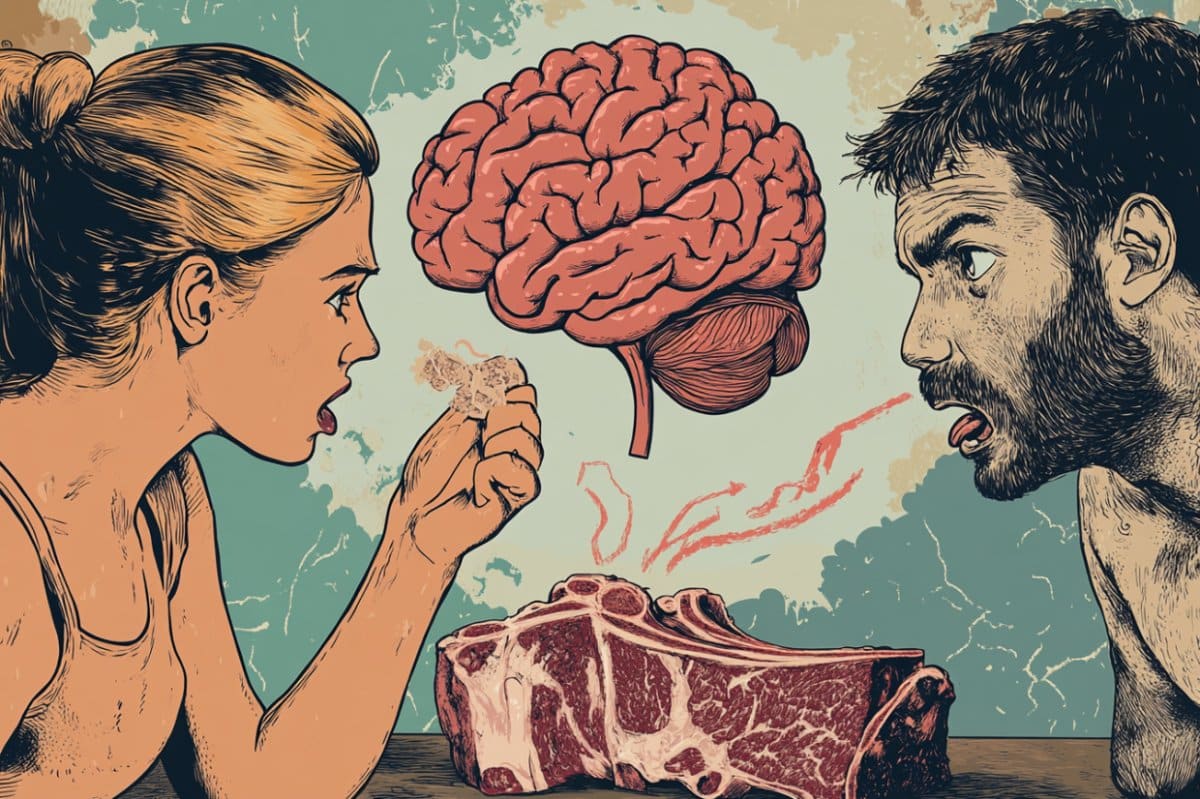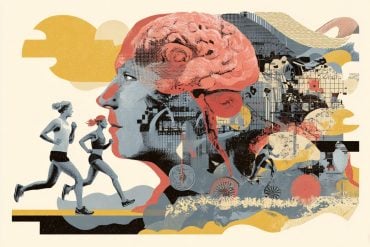Summary: A new study finds that vegetarians reject meat with the emotion of disgust, rather than simple distaste, mirroring the strong aversion meat-eaters feel toward taboo foods like human flesh or feces. In contrast, disliked vegetables like beets or sprouts are typically rejected due to distaste, an aversion based on taste or texture.
This suggests that meat rejection involves deeper psychological and evolutionary mechanisms, possibly linked to avoiding pathogens. Researchers believe this emotional response strengthens with intentional meat avoidance, such as during Veganuary.
Key Facts:
- Disgust vs. Distaste: Meat is rejected with disgust, while vegetables are rejected due to distaste.
- Pathogen Avoidance: Disgust toward meat may have evolved to help humans avoid disease.
- Behavior Reinforcement: The disgust response can strengthen with deliberate meat avoidance.
Source: University of Exeter
Many vegetarians who reject meat feel disgust which closely matches the aversion others feel to the idea of eating human flesh, feces or dog meat, new research has found.
A study led by the University of Exeter set out to investigate whether there is a difference in the psychological mechanisms by which people reject meat compared to vegetables.
In an online study involving 300 people (mostly vegetarians), researchers found that people who reject vegetables they dislike do so because they feel ‘distaste’ – a simple aversion to taste, texture, or smell of a food.
In contrast, when people dislike and reject meat that would be considered appetising by omnivores (such as roast chicken or beef steak), they feel the more complex emotion disgust, in a similar way that meat-eaters were disgusted by the idea of eating human meat, feces, or dog meat.
Professor Natalia Lawrence, of the University of Exeter said: “This is the most robust evidence to date that we reject meat and vegetables that we find repellent based on different underlying processes. Obviously finding meat disgusting can help people avoid eating it, which has health and environmental benefits.
“Other research we’ve conducted suggests that these feelings of disgust may develop when people deliberately reduce or avoid eating meat, such as during Veganuary ”
The study, published in Appetite, recruited 252 people who reject meat and 57 omnivores who eat meat. Researchers tested responses to images of 11 different substances (palatable meat; vegetables which are commonly disliked, such olives, sprouts, raw aubergine, and beetroot. Participants were asked several questions about how eating each of the foods would make them feel.
Each question was linked to either disgust (e.g. ‘I would dislike any dish which contained even the tiniest amount of this food, even if I could not taste, smell, feel, or see it.’) or distaste (e.g. ’I would dislike the taste, smell, or texture of this food.’) which allowed the researchers to make a distinction between what people felt (disgust or distaste) when they rejected different foods.
To compare reactions, the meat-eating participants were also shown images of substances which everyone considers disgusting to eat: human flesh, dog meat and faeces.
The team recorded 557 rejections of meat (up to three rejections from 252 people), and 670 rejections of vegetables (up to 2 rejections each from 309 people). Where participants said they would not eat the item pictured, they completed questions to investigate the grounds for rejection.
Consistently, people rejected vegetables they did not like based on distaste, and rejected meat and disgust elicitors in a strikingly similar disgust pattern.
Lead author Dr Elisa Becker, who conducted the work at the University of Exeter and has since moved to Oxford University, said: “Meat eaters responded to the idea of eating these truly disgusting substances like faeces in the same way that vegetarians responded to images of meat that they didn’t want to eat, and this was very different from the way they responded to vegetables they rejected.
“Although we may think we’re rejecting a food simply because we don’t want to eat it, we showed that the basis for this rejection is quite different – and we think that’s evolved to protect us from pathogens that can lie undetected in meat.”
About this food aversion and emotion research news
Author: Louise Vennells
Source: University of Exeter
Contact: Louise Vennells – University of Exeter
Image: The image is credited to Neuroscience News
Original Research: Open access.
“Disgust and Distaste – Differential mechanisms for the rejection of plant- and animal-source foods” by Natalia Lawrence et al. Appetite
Abstract
Disgust and Distaste – Differential mechanisms for the rejection of plant- and animal-source foods
People may reject foods due to distaste (an affective reaction to undesirable sensory properties) or disgust (an emotive response to the idea of what a food represents). Disgust can further be classified into sub-types: core, animal-reminder, and moral disgust, all of which could influence food rejection.
Prior research suggests different rejection mechanisms for plant and animal foods.
We tested this in an online study in a meat-rejecting sample (mostly vegetarians, n = 252), and a meat-accepting sample (omnivores, n = 57).
Participants rated foods they rejected for consumption on criteria related to distaste (e.g. objection to taste), general disgust (e.g. contamination potential of the food), and specific disgust sub-types.
Ratings across these criteria created unique response profiles for commonly disliked vegetables, meats, universal disgust elicitors, and accepted food (control).
Visual inspection of response profiles, correlations, and a multidimensional scaling analysis all revealed that plant foods were rejected based on distaste, whereas rejection responses to palatable meat closely matched responses to human meat, faeces, and dog meat (disgust elicitors), both rejected based on disgust.
Inspecting disgust response profiles suggested that core disgust was the primary disgust type, with animal-reminder and moral disgust sometimes experienced in addition.
This study confirms differential rejection mechanisms for plant-based foods (rejected via distaste) and meat (core disgust).
This suggests different evolutionary strategies humans had to adapt to cope with plant toxins detectable through distaste and pathogens found in meat not detectable by taste.
Such adaptations could be leveraged in future interventions to reduce meat consumption or increase vegetable intake.








